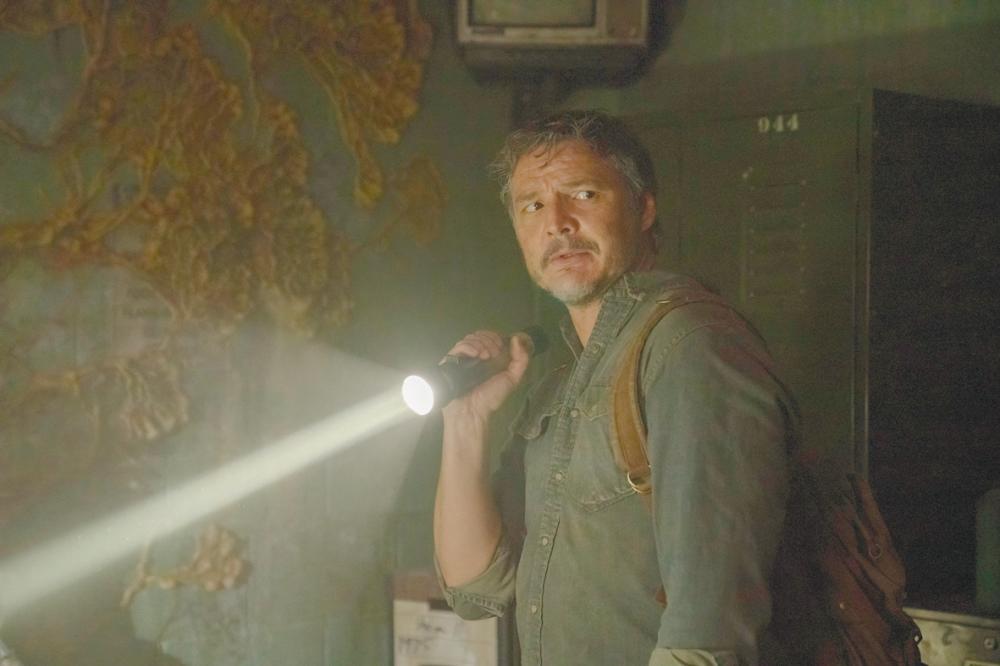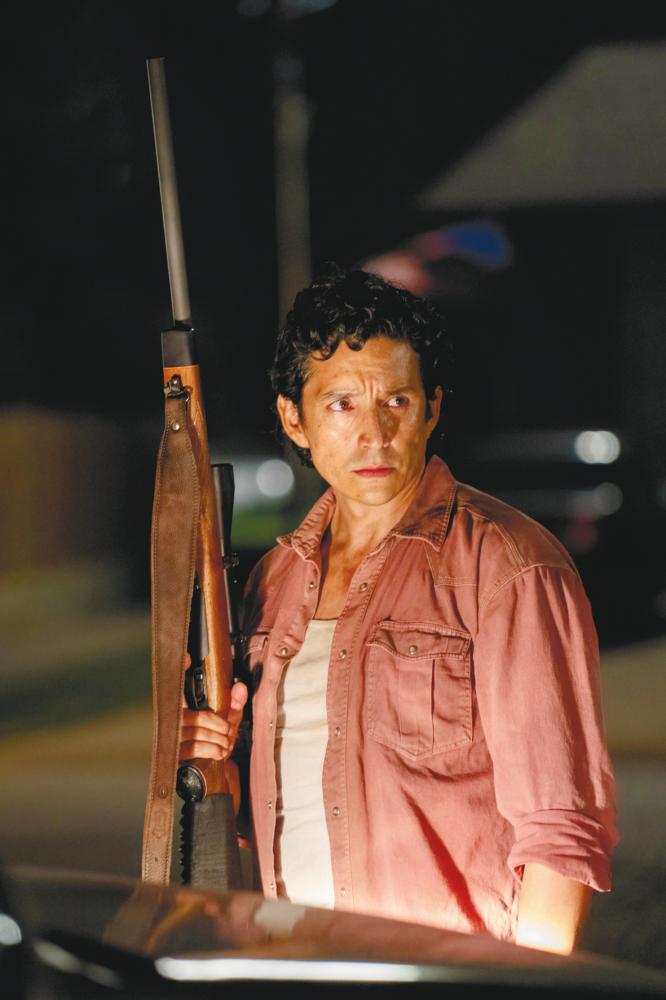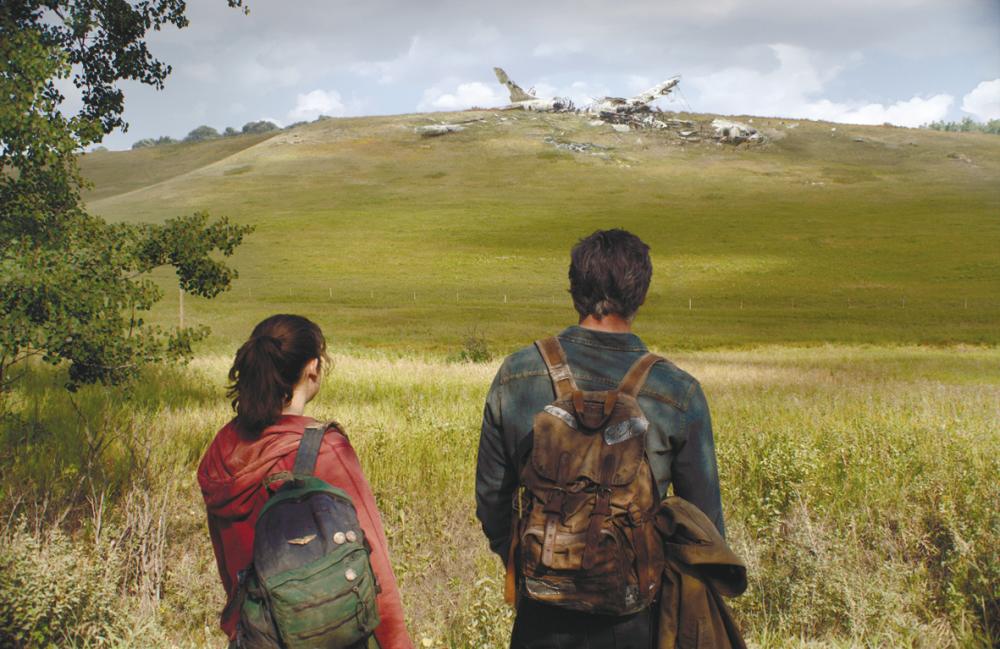BASED on Naughty Dog’s The Last of Us video game series, HBO’s The Last of Us is an adaptation of the first game’s story, which is focused on the journey of franchise leads Joel and Ellie in a post-apocalyptic America.
Twenty years before the main story begins, America falls due to an outbreak of the real-world cordyceps fungus that mutates to take over the brains of human hosts, effectively turning them into mindless monstrosities.
After the outbreak, remnants of uninfected humans are scattered, with most being contained in ‘Quarantine Zones’ run by FEDRA, a military organisation that took control after the fall of the government. Survivors in these zones live by working for FEDRA as hard labour.
In Boston’s quarantine zone, Joel (Pedro Pascal) lives a double life as a smuggler with his partner Tess (Anna Torv).
Following an attack on the Boston FEDRA by the Fireflies – freedom fighters that formed in response to FEDRA’s totalitarian rule –, Fireflies leader Marlene (Merle Dandridge) tasks Joel and Tess with smuggling Ellie (Bella Ramsey) out of the “safe” quarantine zone for unknown reasons.
At the same time, Joel seeks out his missing brother, Tommy (Gabriel Luna).

Not the usual zombie fare
It needs to be stated that The Last of Us is not your run-of-the-mill zombie story. It never was in the games by Naughty Dog, and the same applies to HBO’s show.
For one, the Infected are not the generic zombies plaguing every other zombie TV series out right now. They’re basically “mushroom-people”; humans with varying degrees of mutations caused by the cordyceps fungus.
Secondly, the show – like the game – is more about the humans, the relationships they share with each other, the grey morality of the world they live in and the bleak choices that dictate their survival.
Tying in with the bleak world, the first season seemingly also sets up its second season, which will adapt the much, much bleaker sequel to the first game, The Last of Us Part II.
The rich storytelling is aided by the impeccable cast of actors.
Praises have been sung of Pascal for his previous performances, and it will continue with his portrayal of Joel. Instead of mimicking Troy Baker’s performance in the games, Pascal brings his own vulnerable, but hard as nails take on the character.
Sadly, scorn has been shot at the casting of Ramsey as Ellie. But her portrayal of Ellie is less about looks and more about performance, and boy, does she perform.
On that merit and her ability to bring the character’s feisty spirit to a live-action medium, Ramsey was perfect for the role.
The other supporting cast are nothing to scoff at either, particularly Nick Offerman as Bill, who gets an entire episode for himself.

Faithful adaptation, with compromises
Fans of the games should not go into HBO’s The Last of Us expecting a 1:1 live-action remake of the first game. The show adapts the source material’s story and expands on it exponentially.
For fans who will watch the show, I personally know they will love these “additions” that essentially boil down to crucial character development that was not in the first game.
The show’s other co-creator and co-writer Craig Mazin (the brains behind HBO’s Chernobyl) treats the characters and story with the same care Druckmann did for the games, and this wouldn’t be possible anywhere else other than HBO, which is known for its prestige storytelling.
Unfortunately, this heavier focus on storytelling is a double-edged sword.
In the original game and its sequel, gameplay was secondary to the story; Naughty Dog pushed storytelling and character building to the forefront. For the HBO show, evidently, there is no “gameplay”. It’s all live-action. On paper, that sounds great, but in practice, there is a lot left to be desired.
This is because there is only a handful of action sequences in HBO’s The Last of Us.
For the games, the action set pieces were in-between storytelling scenes or area explorations. As the show has very little action, there is nothing to break the pacing, and bring that thrill, or sense of danger, to the characters.
It’s an odd creative decision, especially taking into account how few these encounters are in the show, whether its against humans, the Infected or both. This isn’t accounting for how the devastating violence from the games is toned down to almost nothing as well.
Selling the idea of a brutal world filled with opportunistic humans who would kill you just for a chance to steal a can of fruits, and deformed mushroom-monsters, becomes hard when the brutality or monstrosities are rarely shown.

Technically sound
On the technical side, the show’s cinematography, visual effects and sound design does not fall short, and this is important to note because the screeners that I – and probably other media were given access to – had unfinished CGI and sound effects.
Despite that, the show still looked and sounded amazing, particularly the Infected’s unique sound design.
The Infected were also brought to life with a mixture of CGI and prosthetics, and they look aesthetically both terrifying and beautiful. It’s a feat how something from a video game is translated so faithfully to live-action television.
The close-ups and camera work, coupled with how the cinematography plays with the lighting, deserve to be applauded as well, as they bring a surreal sense of intimacy. This can be seen most vividly during the episode with Offerman.
Gustavo Santaolalla who scored the original game (and its sequel) returns to compose the show’s score, and he does a great job in “grandios-ing” the original theme (also called “The Last of Us”) from a video game to a television format.
Once the show is out in full, I will definitely be revisiting each and every episode.
The Last of Us will premiere on HBO GO and HBO (Astro Ch 411) today.









